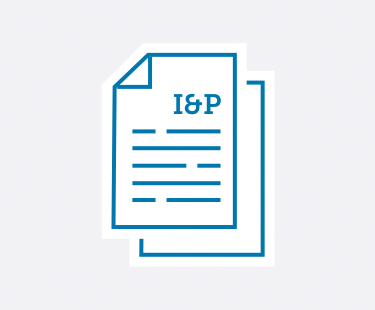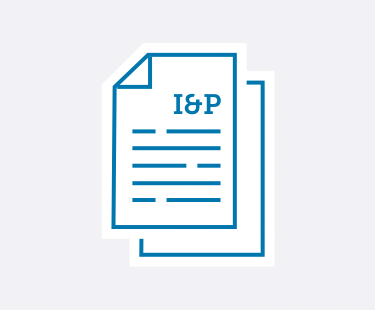

Learn practical strategies to handle emerging trends and leadership challenges in private schools.
No matter if you’re a School Head, Admission Director, Development Director, Board member, or any other private school administrator—Ideas & Perspectives®, ISM’s premier private school publication, has strategic solutions for the pervasive problems you face.
- Tuition not keeping pace with your expenses? In I&P, explore how to use strategic financial planning to create your budget and appropriately adjust your tuition.
- Enrollment dropping off? Discover how to implement the right admission and enrollment management strategies that engage your community—and fill your classrooms.
- Trouble retaining teachers? Learn how you can best support your teachers using ISM’s Comprehensive Faculty Development framework. Your faculty members will become more enthusiastic about their roles—which ultimately improves student outcomes.
- Fundraising campaigns not as successful as you’d hoped? Implement ISM’s practical advice and guidance to build a thriving annual fund, construct an effective capital campaign, and secure major donors—no matter your community size or location.
- Not sure how to provide professional development—for you and your staff? Learn ways to develop and fund a successful professional development strategy. You can improve teacher-centered satisfaction and growth, which in turn strengthens student-centered learning.
- Problematic schedule? You can master the challenges of scheduling with the help of ISM’s practical advice, based on our experience with hundreds of schools and our time-tested theories.
- And so much more.
I&P has shared targeted research, up-to-date insight, and sound theory with school leaders since 1975. More than 8,500 private school decision-makers find the answers to their schools’ administrative and governance matters in our advisory letter. We give you the strategic answers you need.
As an ISM Silver or Gold member, you not only receive issues online and in print 10 times a year, but you have access to 900+ articles in our web archive. Need help? It’s at your fingertips! Learn more and sign up for ISM's membership here.
Search
See the articles from our latest issue of Ideas & Perspectives.
We Need New Evidence for Old Meta-Messages
Volume 42 No. 14 // November 6, 2017
Private-independent schools have the daunting task of persuading families to purchase what is available free through their public school system. Despite national perceptions that public schools system are “broken,” the annual Gallup/PDK poll finds that parents are happy with their local public schools.1 We can’t rely on distaste for public education to drive our enrollment. More specifically, many of our families live in the same neighborhoods as the highest-ranked public schools in their area. Quite obviously, we must attract and re-attract families to our mission. While each school nuances these messages, schools have approached this task by delivering the following meta-messages to communicate the value of an independent education.
1. Already a member? Click here to login.
2. Not a member? Click here to become a member.
3. Not sure? We'll help you figure it out.
Scheduling Supports Advisory Program Success
Volume 42 No. 14 // November 6, 2017
The advisory program can be a distinguishing feature among your school’s offerings, and a source of multiple benefits to your students and their families. Of course, it must be well-planned and effectively implemented. There’s also the question of how advisory activities will be scheduled. The success of your advisory program depends, in part, on how it is incorporated into the school day, week, and year. As the School Head, meet with your scheduler to go over your expectations and ensure the schedule supports the scope and excellence of the program.
1. Already a member? Click here to login.
2. Not a member? Click here to become a member.
3. Not sure? We'll help you figure it out.
Executive Leadership: The Relationships Between Predictability and Support, the School Head's Well-Being, and Faculty Culture
Volume 42 No. 14 // November 6, 2017
In the first two articles in this series, we shared the results of our 2016 study on executive leadership, well-being, and school performance. The study validated the centrality of a high-quality, charismatic, and flourishing executive leader in the school’s ability to drive the school’s success, including enrollment demand.2 In this third article, we answer the question, “What predicts high scores on executive leadership?” Through the first two articles, we established that charismatic (but not excessively extroverted) leaders who guide schools with greater enrollment demand scored higher on our executive leadership measure. Of course, this assumes the school has a strategic plan and a strategic financial plan. In this article, we examine the factors that lead to high scoring on the executive leadership measure (Stability Marker No. 3). In other words, what are the major contributors to being a high-quality leader?
1. Already a member? Click here to login.
2. Not a member? Click here to become a member.
3. Not sure? We'll help you figure it out.
How to Jump Start a Stalled Fundraising Campaign
Volume 42 No. 13 // October 16, 2017
Many schools run capital campaigns and annual fund campaigns simultaneously. Capital campaigns are usually implemented over several years and are designed to increase capital assets such as new or improved facilities and/or growing endowment. Annual fund campaigns are repeated yearly and are most often created for enhancements for the current year. Balancing these two efforts requires clear goals, appropriate volunteer training, targeted donor solicitation, and a strategic sense of timing. A capital campaign, because of the size of the goal and the drive’s length, is more likely to falter than an annual campaign that in many schools has become habitual. Being prepared with “jump-starting” strategies can mean the difference between success and failure.
1. Already a member? Click here to login.
2. Not a member? Click here to become a member.
3. Not sure? We'll help you figure it out.
The Head Support and Evaluation Committee: Technicalities
Volume 42 No. 13 // October 16, 2017
In an earlier article, “The Head Support and Evaluation Committee: An Update,” we stated that “the HSEC, as a Board Committee, is primarily concerned with the Board’s strategic objectives and the Head’s responsibilities in their successful achievement.” Consider now the HSEC’s membership, its charge, and its self-evaluation. In staffing the HSEC, the Committee on Trustees should consider the School Head’s position as an executive and as the sole employee of the Board. The Head is responsible for all aspects of the school’s operations, from marketing to teaching Social Studies—without a peer in the school. Use the following chart to ensure the appropriate questions have been asked about the HSEC’s membership.
1. Already a member? Click here to login.
2. Not a member? Click here to become a member.
3. Not sure? We'll help you figure it out.
Review Your School's Capitalization Policy
Volume 42 No. 13 // October 16, 2017
As your school grows in size and complexity, you should review (or establish) accounting policies. Often overlooked is the school’s capitalization policy. A capitalization policy sets guidelines determining which purchases you expense and which purchases you capitalize and then depreciate. It allows your school to match revenues more closely to the expenses associated with the use of those assets. By depreciating an asset, you recognize that it will provide value to your school’s operation for several years. It is easy to determine what constitutes an asset. Land, buildings, utility systems, kitchen equipment, and vehicles certainly qualify. Classroom furniture, computers, and athletic equipment, among others, may also fall into the asset category.
1. Already a member? Click here to login.
2. Not a member? Click here to become a member.
3. Not sure? We'll help you figure it out.
Developing the Annual Administrative Agenda
Volume 42 No. 13 // October 16, 2017
The annual administrative agenda delineates the tasks of the School Head and the Leadership Team (the senior administrators who report directly to the Head). A previous I&P article articulated the process for uncovering the operations responsibility in the Board’s strategic plan/strategic financial plan.* That is not the totality of what the School Head and Leadership Team are accountable for, however. This article, the third in the series, details how to develop the annual administrative agenda.
1. Already a member? Click here to login.
2. Not a member? Click here to become a member.
3. Not sure? We'll help you figure it out.
Primary Drivers of School Outcomes: Insights From Our Executive Leadership and Well-Being Study
Volume 42 No. 12 // September 25, 2017
ISM recently conducted a study of School Head leadership to extend our knowledge of executive leadership and investigate the relationship among our Tier 1 Stability Markers, School Heads’ characteristics and experience, and their well-being/flourishing. In a previous article, we re-introduced our approach to measuring executive leadership and described the general results and conclusions for the study. This article is the second in the series.
1. Already a member? Click here to login.
2. Not a member? Click here to become a member.
3. Not sure? We'll help you figure it out.
School Is Not an Equal Place
Volume 42 No. 12 // September 25, 2017
As School Head, you want every student to be successful. Each student and parent likely comes with the assumption that, if mission-appropriate, the child will “win” at the game of school. The school promises to deliver its mission to all students, not just most of them. As we consider how to deliver the mission with excellence to each student, there is a hidden assumption that the classroom is an equal opportunity environment. Exceptional governance practices (including strategic planning and strategic financial planning) and your actions as School Head in leading faculty are key components of sustaining future success.
1. Already a member? Click here to login.
2. Not a member? Click here to become a member.
3. Not sure? We'll help you figure it out.
Developing the Annual Board Agenda: An Example
Volume 42 No. 12 // September 25, 2017
A previous I&P article provided an overview of the elements of agenda-making for the Board and the School Head. This article, the second in the series, details how to develop the annual Board agenda. The annual Board agenda is one of the focal points in ISM’s data-informed approach to strategic Board structure and function. After your Board of Trustees and senior administration have developed a strategic plan/strategic financial plan that conforms to ISM criteria, you, as Board President, with advice and counsel from the Committee on Trustees (COT), will create an annual Board agenda that sets out the governance-level tasks for the upcoming year. Once the committee chairs have accepted their assignments along with their (written) committee charges and deadlines, the annual Board agenda can be finalized and introduced to the Board as a whole.
1. Already a member? Click here to login.
2. Not a member? Click here to become a member.
3. Not sure? We'll help you figure it out.


